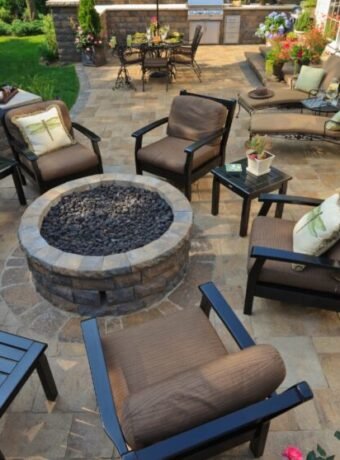Last Updated on June 30, 2025 by Julian Espinosa
Are you passionate about gardening but finding traditional methods increasingly challenging? Vertical gardening might be the perfect solution you’ve been searching for! This innovative approach transforms any space—from tiny balconies to sunny patios—into a thriving garden paradise that’s accessible, beautiful, and incredibly rewarding.
Unlike traditional gardening that requires bending, kneeling, and extensive ground space, vertical gardening brings your plants up to you. By growing upward instead of outward, you can create stunning gardens at comfortable heights that are easy to tend and maintain. This method is particularly wonderful for seniors who want to continue nurturing their green thumbs without the physical strain.
In this comprehensive guide, you’ll discover:
- How vertical gardens reduce physical strain while maximizing growing space
- The best plant varieties that thrive in vertical setups, from aromatic herbs to colorful flowers
- Step-by-step instructions for creating your own vertical garden masterpiece
- Essential maintenance tips to keep your garden flourishing year-round
- Creative display ideas that turn your garden into living art
- Practical solutions for common challenges like drainage and plant selection
Whether you’re working with a small apartment balcony or a spacious backyard, vertical gardening offers endless possibilities for creativity and growth. You’ll learn how to select the right plants for your specific conditions, build supportive structures, and maintain a garden that brings joy throughout the seasons. Ready to discover how vertical gardening can transform your space and reignite your passion for growing? Let’s explore this exciting gardening adventure together!
Embracing Vertical Gardening
Vertical gardening involves growing plants upward rather than outward, making efficient use of available space through walls, trellises, and elevated containers. This approach is particularly beneficial for seniors who may have mobility considerations or limited outdoor areas.

By utilizing vertical structures, you can enjoy all the therapeutic benefits of gardening without the physical demands of traditional ground-level cultivation. Your garden becomes accessible at comfortable heights, allowing you to tend your plants while standing or even sitting.
Prefer to listen rather than read?
Benefits of Vertical Gardening for Seniors
Recent research in horticultural therapy confirms what many gardeners instinctively know—gardening provides significant physical and mental health benefits. A 2023 study published in the Journal of Health Psychology found that regular gardening activities can reduce stress hormones by up to 30% and improve overall well-being in older adults.
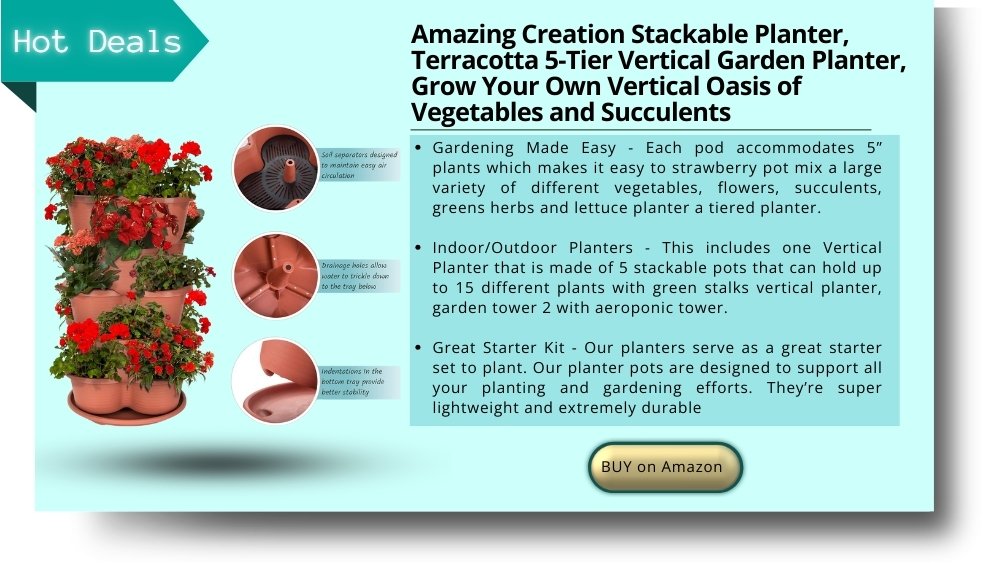
Space Efficiency
Modern vertical gardening systems can produce up to 40% more yield per square foot compared to traditional horizontal gardens, according to urban agriculture research from 2024. This efficiency stems from the three-dimensional approach that maximizes every inch of available space.
Your vertical garden transforms walls, fences, and hanging structures into productive growing areas. Balconies, patios, and even narrow spaces become fertile grounds for creativity, supporting diverse plant communities that thrive in vertical arrangements.
The strategic placement of plants in tiered or cascading arrangements creates beautiful displays while maximizing growing potential. Herbs, vegetables, and ornamental plants can coexist harmoniously, creating a living tapestry that’s both functional and aesthetically pleasing.
Reduced Strain and Accessibility
Traditional gardening often requires movements that can be challenging for seniors—bending, kneeling, and working at ground level. Vertical gardening eliminates these concerns by bringing plants to comfortable working heights.
Research from the American Occupational Therapy Association shows that gardening at standing height reduces back strain by up to 65% compared to ground-level gardening. This ergonomic advantage allows you to maintain your gardening passion without compromising your physical comfort.
The accessibility benefits extend beyond physical comfort. Seniors using mobility aids can still fully participate in vertical gardening by positioning planters and supports at appropriate heights. This inclusive approach ensures that everyone can experience the joy of nurturing plants and connecting with nature.
Enhanced Aesthetics
Vertical gardens act as captivating living artworks, infusing a touch of enchantment and a splash of nature’s palette into every corner they grace. These botanical masterpieces are not merely confined to outdoor spaces; they effortlessly transcend boundaries, adorning patios, balconies, and even indoor rooms with their vibrant charm.
Picture lush foliage cascading from a balcony, creating a tranquil curtain. See a living wall adorned with colourful blooms, transforming a plain wall into a breathtaking tapestry. Even indoor rooms are enchanted by a vertical garden, infusing life into every corner.
Vertical gardens are not just visually pleasing, they also purify the air and provide a connection to nature. They bring beauty and wonder to spaces, allowing us to appreciate the intricate dance of life.
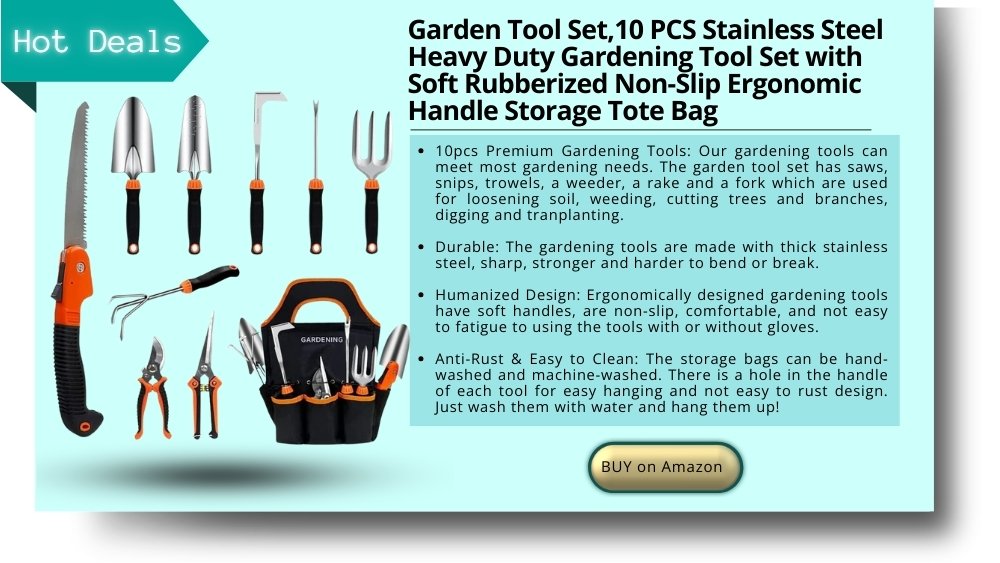
Improved Plant Health
Vertical gardens naturally provide better air circulation around plants, reducing the risk of fungal diseases that commonly affect crowded horizontal gardens. The elevated position also makes it easier to spot and address pest issues early, before they become significant problems.
A 2024 study in Urban Agriculture Research found that vertical gardens experience 50% fewer pest problems compared to traditional ground gardens, largely due to improved air circulation and easier monitoring access.
Therapeutic Benefits
The mental health benefits of gardening are well-documented, with recent research showing that seniors who engage in regular gardening activities report 25% lower rates of depression and anxiety. The act of tending plants provides a sense of purpose and accomplishment that’s particularly valuable during retirement years.
Vertical gardening amplifies these benefits by making the activity more accessible and less physically demanding. The close proximity of plants in vertical arrangements also creates more opportunities for sensory engagement—touching leaves, smelling herbs, and observing daily growth changes.
Selecting Plants for Vertical Success
Choosing appropriate plants is crucial for creating a thriving vertical garden. Consider your local climate, available sunlight, and personal preferences when making selections.
Understanding Your Growing Conditions
Before selecting plants, assess your space carefully. Note how many hours of direct sunlight your vertical garden area receives daily. Most vegetables and herbs need 6-8 hours of direct sunlight, while many ornamental plants and leafy greens can thrive with 4-6 hours.
Consider your local climate zone and typical weather patterns. Wind exposure is particularly important for vertical gardens, as elevated plants may face stronger air currents than ground-level gardens.
Herbs and Aromatics: The Perfect Starting Point
Culinary herbs are ideal for vertical gardening beginners. They’re typically compact, require minimal space, and provide immediate benefits for your kitchen.
Basil grows beautifully in containers and provides fresh leaves throughout the growing season. Choose compact varieties like ‘Spicy Globe’ or ‘Piccolo’ for best results in vertical spaces.
Mint thrives in containers, which actually helps control its spreading tendency. Try different varieties like peppermint, spearmint, or chocolate mint for diverse flavors.
Thyme creates beautiful cascading effects in hanging containers while providing aromatic leaves for cooking. This hardy herb tolerates various growing conditions and requires minimal maintenance.
Rosemary works well in larger vertical containers and provides year-round greenery in mild climates. Its upright growth habit makes it perfect for vertical arrangements.
Compact Vegetables for Maximum Harvest
Dwarf and compact vegetable varieties are specifically bred for container growing and small spaces, making them perfect for vertical gardens.
Cherry tomatoes like ‘Tumbling Tom’ or ‘Micro Tom’ produce abundant fruit in hanging baskets or wall-mounted containers. These varieties are naturally compact and don’t require extensive pruning.
Peppers adapt well to vertical growing, especially compact varieties like ‘Lunchbox’ peppers or ornamental types that provide both beauty and harvest.
Lettuce and leafy greens grow quickly in vertical planters and can be harvested continuously. Try ‘Buttercrunch’ lettuce or colorful Swiss chard for visual appeal.
Strawberries are naturals for vertical growing, with trailing varieties creating beautiful cascading displays while producing sweet fruit.
Succulents: Beauty with Minimal Maintenance
Succulents offer incredible diversity in colors, textures, and forms while requiring minimal care. They’re perfect for seniors who want beautiful plants without intensive maintenance requirements.
Popular choices include echeveria, sedum varieties, and jade plants. These drought-tolerant plants thrive in well-draining containers and can create stunning living wall displays.
Climbing Plants for Natural Vertical Growth
Vining plants naturally climb and spread, making them perfect partners for vertical structures.
Beans and peas not only climb naturally but also improve soil nutrition through nitrogen fixation. Bush varieties work well in containers, while pole varieties can climb trellises or supports.
Cucumbers produce abundant harvests in vertical systems when provided with strong support structures. Choose compact varieties like ‘Spacemaster’ for best results.
Morning glories and other flowering vines add color and beauty to functional vertical gardens, creating living privacy screens or decorative elements.
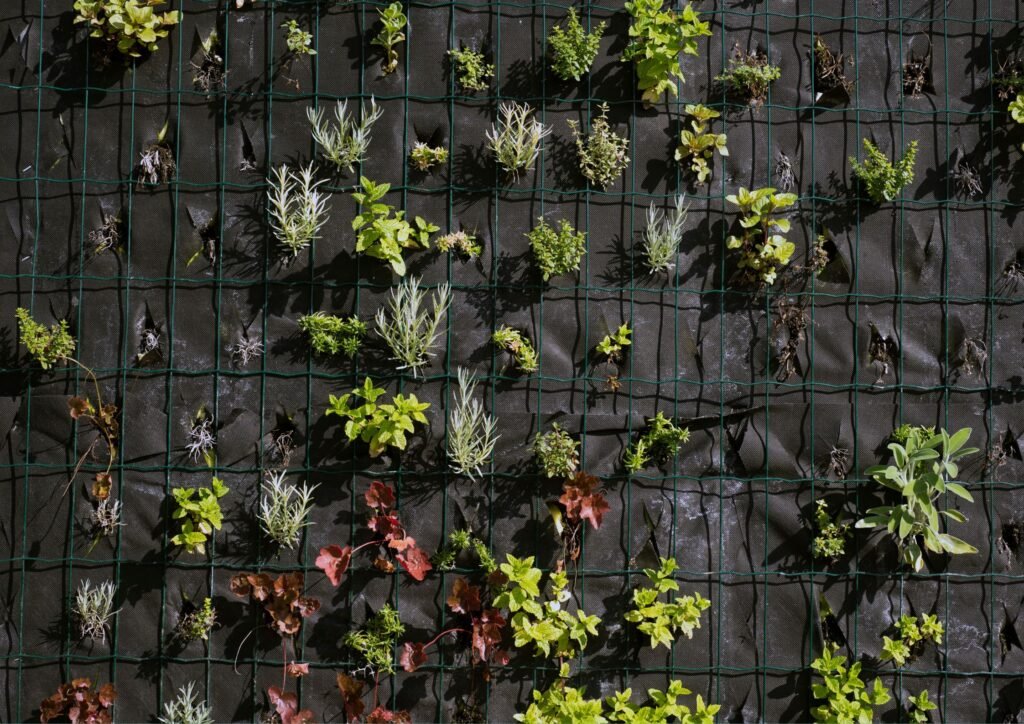
Building Your Vertical Garden: A Step-by-Step Approach
Creating a vertical garden doesn’t require extensive construction skills or expensive materials. With careful planning and the right approach, you can build a thriving vertical garden that suits your space and abilities.
Choosing Your Location
Success starts with selecting the right location for your vertical garden. Look for areas that receive appropriate sunlight for your chosen plants—most vegetables and herbs need 6-8 hours of direct sun daily.
Consider accessibility when choosing your location. Ensure you can comfortably reach all parts of your vertical garden for watering, harvesting, and maintenance. If you use mobility aids, make sure the area allows easy access.
Protection from extreme weather is also important. While some wind is beneficial for plant health, excessive wind can damage delicate plants and dry out containers quickly.

Gathering Essential Materials
Quality materials ensure your vertical garden’s long-term success and reduce maintenance requirements.
Containers: Choose containers with adequate drainage holes and appropriate size for your plants. Fabric grow bags, plastic planters, and wooden boxes all work well, depending on your aesthetic preferences and budget.
Support structures: Trellises, stakes, and cages provide necessary support for climbing plants. Cedar and other naturally rot-resistant woods are excellent choices for durability.
Soil: Use high-quality potting mix designed for containers. Garden soil is too heavy and doesn’t drain well in containers. Look for mixes containing perlite or vermiculite for improved drainage.
Irrigation supplies: Drip irrigation systems or soaker hoses can simplify watering, especially for larger vertical gardens. These systems provide consistent moisture while conserving water.
Planning Your Layout
Before planting, sketch your vertical garden layout, considering each plant’s mature size and growth habits. Place taller plants where they won’t shade shorter ones, and group plants with similar water and light requirements together.
Consider the visual appeal of your arrangement. Combine plants with different textures, colors, and growth habits to create an attractive display that changes throughout the growing season.
Installation and Planting
Begin by securely installing your support structures. Ensure all mounting hardware is appropriate for your wall type and can support the weight of fully grown plants and wet soil.
When planting, use appropriate container sizes for each plant type. Most herbs do well in 6-8 inch containers, while vegetables typically need 12-16 inch containers for optimal growth.
Plant at appropriate depths, following seed packet or plant tag instructions. Water thoroughly after planting to settle the soil and eliminate air pockets around roots.
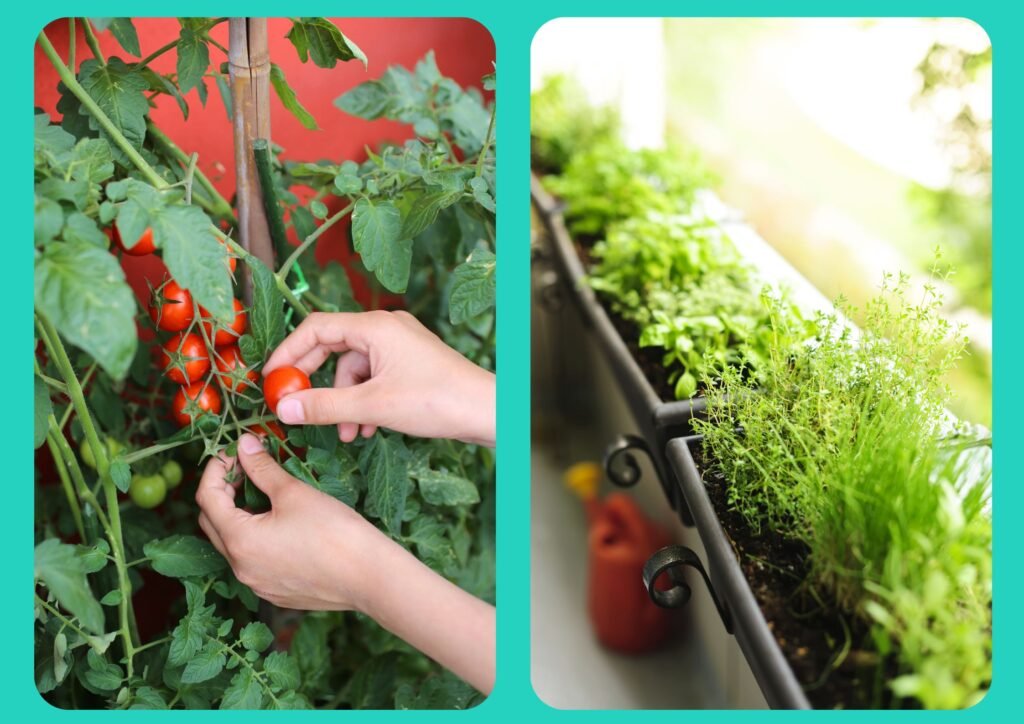
Essential Care and Maintenance for Thriving Gardens
Successful vertical gardening requires consistent but not overwhelming maintenance. Understanding basic care principles helps ensure your garden thrives throughout the growing season.
Watering Wisdom
Vertical gardens may require more frequent watering than traditional gardens because containers dry out faster than ground soil. However, proper watering technique is more important than frequency.
Check soil moisture by inserting your finger into the soil up to the second knuckle. If the soil feels dry at this depth, it’s time to water. Water thoroughly until excess runs from drainage holes, ensuring deep root hydration.
Water early in the day when possible, allowing plants to absorb moisture before midday heat. This timing also reduces evaporation and helps prevent fungal diseases that can develop in consistently moist conditions.
Soil Quality and Nutrition
Container plants rely entirely on the nutrients you provide, making soil quality and fertilization crucial for success. Use high-quality potting mix and refresh it annually for best results.
Liquid fertilizers work well for vertical gardens because they distribute evenly and don’t require soil incorporation. Apply balanced fertilizer every 2-3 weeks during the growing season, following package instructions for container plants.
Organic options like compost tea or fish emulsion provide gentle, steady nutrition while improving soil structure and beneficial microbial activity.
Sunlight Management
Monitor how sunlight patterns change throughout the day and season. You may need to relocate containers or adjust your plant selection based on changing light conditions.
If some areas receive too much intense sunlight, consider using shade cloth during the hottest part of summer. Conversely, if growth becomes leggy or weak, plants may need more light exposure.
Pruning and Harvesting
Regular pruning keeps plants healthy and promotes continued production. Remove dead, damaged, or diseased plant material promptly to prevent problems from spreading.
For herbs, regular harvesting actually promotes bushier growth and increased leaf production. Cut stems just above a leaf pair to encourage branching.
Harvest vegetables when they reach appropriate size and ripeness. Regular harvesting encourages continued production throughout the growing season.
Pest and Disease Management
Vertical gardens often experience fewer pest problems than traditional gardens, but vigilance is still important. Inspect plants weekly for signs of pests or diseases.
Encourage beneficial insects by including flowering plants in your vertical garden. Marigolds, nasturtiums, and alyssum attract helpful insects while adding color and beauty.
When pest problems do occur, try organic solutions first. Insecticidal soap, neem oil, and beneficial bacteria products effectively control many common garden pests without harmful chemicals.
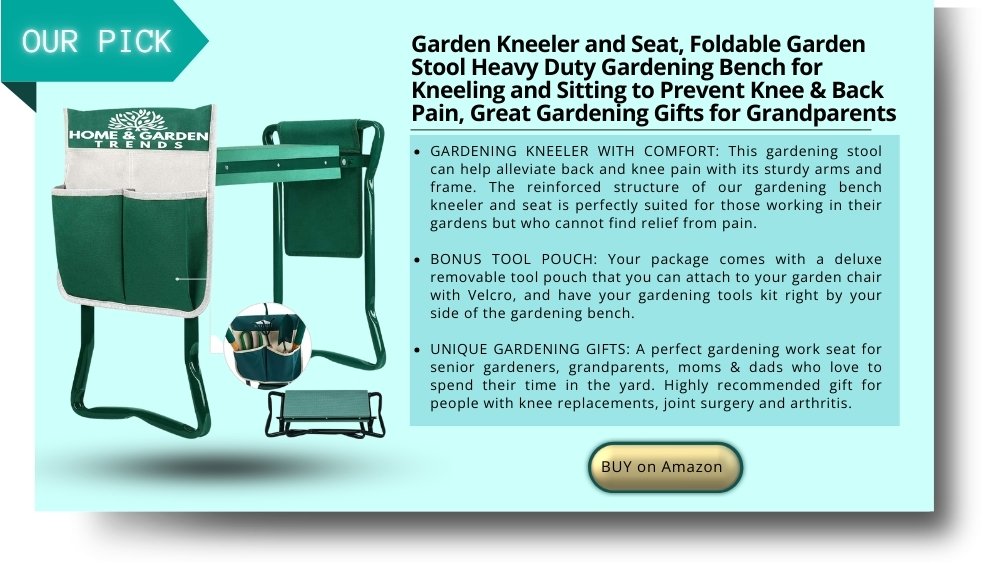
Overcoming Common Challenges
Every gardening method has its challenges, and vertical gardening is no exception. Understanding common issues and their solutions helps ensure your success.
Managing Wind Exposure
Strong winds can damage plants and dry out containers quickly. If your vertical garden faces significant wind exposure, choose sturdier plants and provide windbreaks when necessary.
Temporary windbreaks can be created using shade cloth or clear plastic barriers. These materials reduce wind impact while still allowing light penetration.
Consider plant selection for windy areas. Herbs like rosemary and thyme handle wind better than leafy vegetables like lettuce or spinach.
Weight and Structural Considerations
Ensure your support structures can handle the combined weight of containers, soil, plants, and water. Wet soil is significantly heavier than dry soil, so plan accordingly.
Wall-mounted systems should be attached to wall studs or use appropriate anchors for your wall type. When in doubt, consult with a hardware store professional or contractor.
Distribute weight evenly across your support structure rather than concentrating heavy containers in one area.
Drainage Solutions
Proper drainage prevents root rot and other water-related problems. All containers must have adequate drainage holes—usually several holes per container.
If you’re concerned about water draining onto surfaces below, use saucers or drip trays. However, don’t allow plants to sit in standing water, as this can cause root problems.
Consider the drainage needs of different plants when grouping them together. Succulents need excellent drainage, while some vegetables tolerate slightly moister conditions.
Plant Compatibility
Group plants with similar water, light, and nutrition requirements together. This makes care simpler and ensures all plants in a group receive appropriate conditions.
Some plants grow more aggressively than others and may overwhelm nearby plants. Research mature sizes and growth habits before finalizing your planting plan.
Consider bloom times and harvest schedules when planning your garden. Having plants that peak at different times extends your garden’s productive season.
Enjoying the Fruits of Your Labor: Harvesting and Using Your Produce
One of the greatest joys of vertical gardening is enjoying the fruits of your labor. Whether you’re harvesting fresh herbs for dinner or cutting flowers for indoor arrangements, proper harvesting techniques ensure continued production.
Harvesting Techniques for Maximum Yield
- Herbs: Cut stems in the morning after dew has dried but before the day becomes hot. This timing ensures maximum essential oil content and best flavor.
- Leafy vegetables: Harvest outer leaves first, allowing inner leaves to continue growing. This “cut and come again” method extends your harvest period.
- Fruit vegetables: Pick tomatoes, peppers, and similar crops when they reach appropriate size and color. Regular harvesting encourages continued production.
Culinary Adventures with Homegrown Produce
Fresh herbs transform ordinary meals into culinary adventures. Try making herb-infused oils, vinegars, or butter to preserve your harvest and add gourmet touches to everyday cooking.
Fresh vegetables provide superior flavor and nutrition compared to store-bought options. A simple salad becomes special when made with lettuce and herbs from your own vertical garden.

Elevate Your Garden: Creative Ideas for Vertical Displays
Transform your vertical garden into living art through creative arrangements and displays.
- Living wall art: Arrange plants in patterns or designs that create visual interest even when not in bloom. Use plants with different leaf colors and textures to create natural artwork.
- Seasonal displays: Change your plant selection seasonally to maintain interest throughout the year. Spring herbs, summer vegetables, fall decorative plants, and winter evergreens keep your garden dynamic.
- Themed gardens: Create specific themes like “pizza garden” with tomatoes, basil, and oregano, or “tea garden” with mint, chamomile, and lemon balm.
- Vertical plant pockets: Use fabric pocket planters to create lush, textured displays. These systems are particularly effective for herbs and small flowering plants.
Conclusion
Vertical gardening opens endless possibilities for seniors who want to maintain their connection with nature and continue growing beautiful, productive plants. This innovative approach eliminates many physical challenges associated with traditional gardening while maximizing growing space and creative potential.
Whether you have a small balcony or a spacious patio, vertical gardening empowers you to create a thriving garden that brings beauty, fresh food, and therapeutic benefits to your daily life. The techniques and plant selections discussed in this guide provide a foundation for years of gardening enjoyment.
Remember, gardening is a journey of continuous learning and discovery. Start small, experiment with different plants and techniques, and most importantly, enjoy the process of nurturing life and watching it flourish.
Have you tried vertical gardening, or are you planning to start your own vertical garden adventure? What plants are you most excited to grow in your vertical space? Share your experiences and questions in the comments below—we’d love to hear about your gardening journey!
FAQ: Vertical Gardening
- How much weight can a typical wall support for vertical gardening?
- Most standard walls can support 30-50 pounds when properly anchored to wall studs. For heavier installations, consult a contractor. Always distribute weight evenly and use appropriate mounting hardware for your wall type.
- Can I grow vegetables in vertical gardens during winter?
- Yes, in mild climates or with protection. Cold-hardy vegetables like kale, lettuce, and herbs can grow through winter in many areas. Consider moving containers to protected areas or using row covers during extreme cold.
- How often should I water my vertical garden?
- Check soil moisture daily, especially during hot weather. Most vertical gardens need watering every 1-3 days, depending on weather, plant types, and container size. Water when the top inch of soil feels dry.
- What’s the best vertical gardening system for beginners?
- Start with simple hanging baskets or railing planters with easy-to-grow plants like herbs or lettuce. These systems require minimal setup and provide immediate success to build confidence.
- Can I create a vertical garden on a budget?
- Absolutely! Use recycled containers, make your own trellises from bamboo or wood scraps, and start plants from seeds. Many effective vertical gardens cost less than $50 to establish.
- How do I prevent pests in my vertical garden?
- Inspect plants weekly, encourage beneficial insects with flowering plants, and use organic solutions like insecticidal soap when needed. Vertical gardens typically have fewer pest problems than ground gardens.
- What should I do if my vertical garden gets too much wind?
- Create windbreaks using shade cloth or clear barriers, choose wind-resistant plants, and ensure all structures are securely anchored. Some air movement is beneficial, but excessive wind can damage plants.
- Can I use vertical gardening indoors?
- Yes! Choose appropriate plants for indoor light conditions, ensure good drainage, and provide adequate air circulation. Herbs, leafy greens, and some compact vegetables work well indoors.
References
- Journal of Health Psychology (2023). “Horticultural Therapy and Stress Reduction in Older Adults: A Longitudinal Study.”
- Urban Agriculture Research (2024). “Comparative Yield Analysis: Vertical vs. Traditional Gardening Systems.”
- American Occupational Therapy Association (2024). “Ergonomic Benefits of Elevated Gardening for Seniors.”
- Journal of Environmental Psychology (2023). “Mental Health Benefits of Container Gardening in Retirement Communities.”
- International Journal of Sustainable Agriculture (2024). “Pest Management in Vertical Growing Systems: A Comparative Study.”

